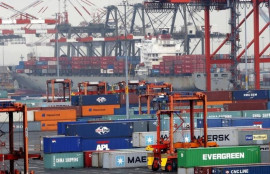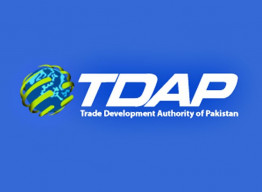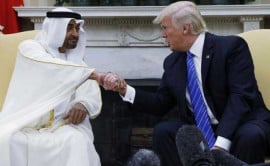
LAHORE: From a global perspective, relative strengthening in economies of the US, EU and UK in 2017, along with partial recovery in commodity prices, boosted the prospects of those emerging economies whose growth tends to hinge on exports and remittances.
For Pakistan as well, both these sources of foreign exchange inflows picked up during 2017-18. In case of exports, strong performances by textiles, rice, sugar and leather manufactures led to some recovery to previously receding trends.
Regarding remittances, lower inflows from GCC countries were offset by an improvement in remittances from non-GCC corridors, particularly the US and the UK. However, these positive developments were overshadowed by a mounting burden of imports, which exacerbated the pressure on the country’s balance of payments.
Five Pak-Iran goods train bogies derail near Chagai
Payments related to the import of petroleum, machinery, metal, and transport were particularly heavy during the second half of 2017-18. However, it is pertinent to mention that most of these have been a result of investments made in creating of energy infrastructure and other mega projects under the CPEC. It is expected that this surge of imports will settle in the coming years and exports will begin to increase as the dividends from these investments will materialise.
Economic outlook
The overall economy of Pakistan is performing well and continues to grow strongly. With a modest increase in inflation, the prices remain under reasonable control. Although Pakistan has made substantial progress to reform its taxation system and the business environment, there are still some critical red flags, such as growing fiscal deficit and increasing current account deficit which require immediate attention.
Losing out the export competitiveness has been an important issue facing the economy. Strategic interventions and reforms by the federal government are required to address sectors represented by the aforementioned weakening economic indicators to ensure macroeconomic stability in the long-run.
Although the trade deficit is countered by remittances and financial inflows due to the CPEC for now, the structural issues of export industries need to be addressed. Nevertheless, Pakistan’s economy is forecasted to grow continually, given that it maintains the momentum on structural reforms and avoids external shocks.
As the economy’s growth momentum picked up its pace, imbalances re-emerged in Pakistan’s external account. All the encouraging trends in real sector, like improvement in energy supplies, industrial expansion, and rising consumer spending, triggered a surge in the demand for imports, which grew by 17.8% and reached a record of $48.6 billion.
Additional stress on the import bill came from steady progress on CPEC-related power and road construction projects. With tapering foreign exchange earnings during the year and lower-than-expected financial inflows, the rise in import burden created a deficit in the balance of payments.
As a result, the country’s foreign exchange reserves declined by $1.7 billion during FY17, after rising for 3 years in a row.
Economic performance during the past five years (2012-2017)
- GDP growth rate increased from 3.7% in 2012-13 to 5.3% in 2016-17, which is the highest in past ten years. Most of this growth has been triggered due to a strong recovery by agriculture and manufacturing, where growth has reached 3.5% and 5.7%, respectively.
- Average inflation was contained at around 4% with multi-decade low policy rate of 5.75%.
iii. Exchange rate remained stable and Pakistan was able to rebuild its foreign exchange reserves in the past 5 years.
- Energy crises were greatly resolved and the industrial sector achieved a significant growth picking up from an average of 0.8% in 2012-13 to 5% in 2016-17.
- Having peaked at 8.8% of the GDP in FY12, followed by 8.2% of the GDP in FY13, overall fiscal deficit narrowed to 4.6% of the GDP in FY16, reflecting sustained and substantial consolidation since FY13.
- FBR’s tax revenues recorded a significant increase since FY13 and gradually grew by 60% in FY16 over FY13.
The key recommendations include:
- Exports have been on a declining trend, especially that of textile and garments sector. However, a depreciation will only impact competiveness if the government is able to control inflation. Thus, it is strongly recommended that the federal government may work out the burden of taxes and its correlation with inflation to improve competiveness of the sectors.
- Exports of Pakistan should be analysed in the context of the GSP Plus status and corrective measures may be taken to improve the market of Pakistani goods in the European Union (EU).
iii. The tax base of the FBR is still quite narrow, in fact the number of filers in the last financial year decreased instead of increasing. The federal government will have to work in increasing this tax base to ease out the pressure from existing tax-payers.
- Easy access to credit for farmers may be ensured to revitalise the agriculture sector. Central bank’s regulations regarding lending should be investment friendly. Cheap loans for the agriculture sector, in particular for small farmers, are necessary to offset the input costs and timely provision of seeds and fertilisers.
- The government may promote derivative trading in commodity markets to provide a widespread market for exchanging risk. In addition to boosting the financial markets, it will particularly contribute towards reducing the price uncertainty in non-perishable agricultural products.
- Ease of doing business reforms agenda should get a big push in the coming year, especially considering the fall back on the ranking in 2018. Punjab is working rigorously to improve its performance against the doing business indicators that fall in provincial domain (enforcing contracts, registering property, starting business, and dealing with construction permits).
The government must work towards improving its rankings against six indicators that fall under its domain, including paying taxes, getting credit, trading across borders, resolving insolvency, protecting minority investors and starting a business.
Dr M AmanUllah is Chief Economist at the Planning and Development Department, Government of Punjab & Muhammad Usman Khan is Provincial Team Leader, Punjab Sub-National Governance Programme.
Published in The Express Tribune, April 9th, 2018.
Like Business on Facebook, follow @TribuneBiz on Twitter to stay informed and join in the conversation.






















































COMMENTS
Comments are moderated and generally will be posted if they are on-topic and not abusive.
For more information, please see our Comments FAQ